Why you can trust Tom's Hardware
The CG437K has two HDR options, Auto and HDR1000. The latter delivers the monitor’s ,ax brightness and contrast for HDR content. It has an edge backlight but can selectively dim parts of it to achieve higher dynamic range. This method is effective, and we’ve seen it before on the 49-inch Samsung CHG90.
HDR Brightness and Contrast
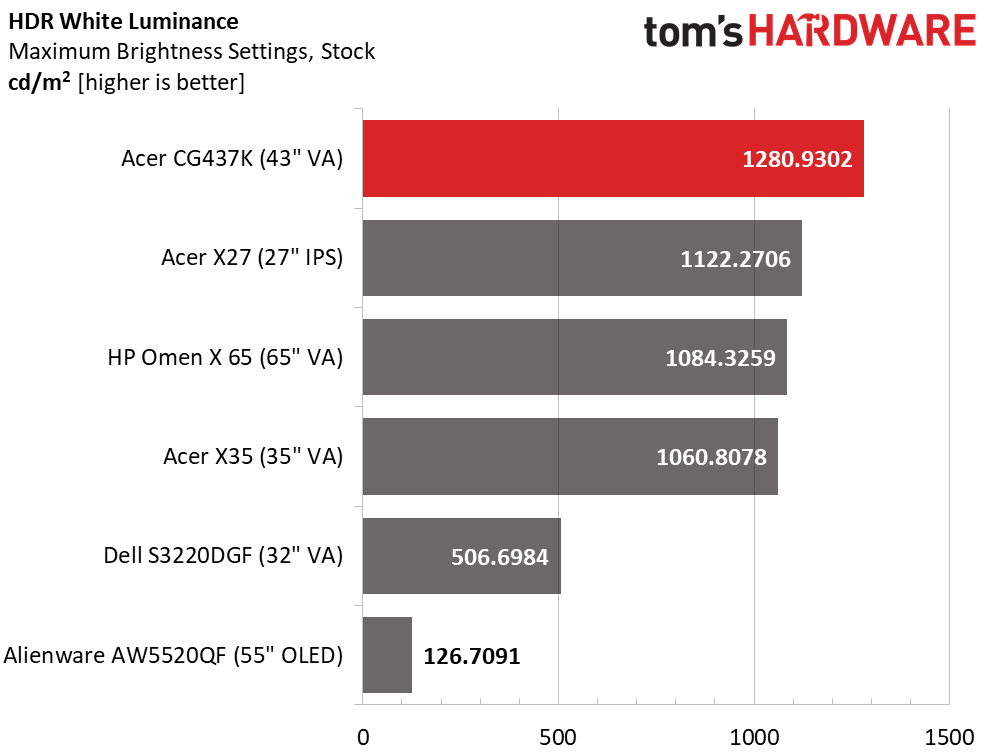
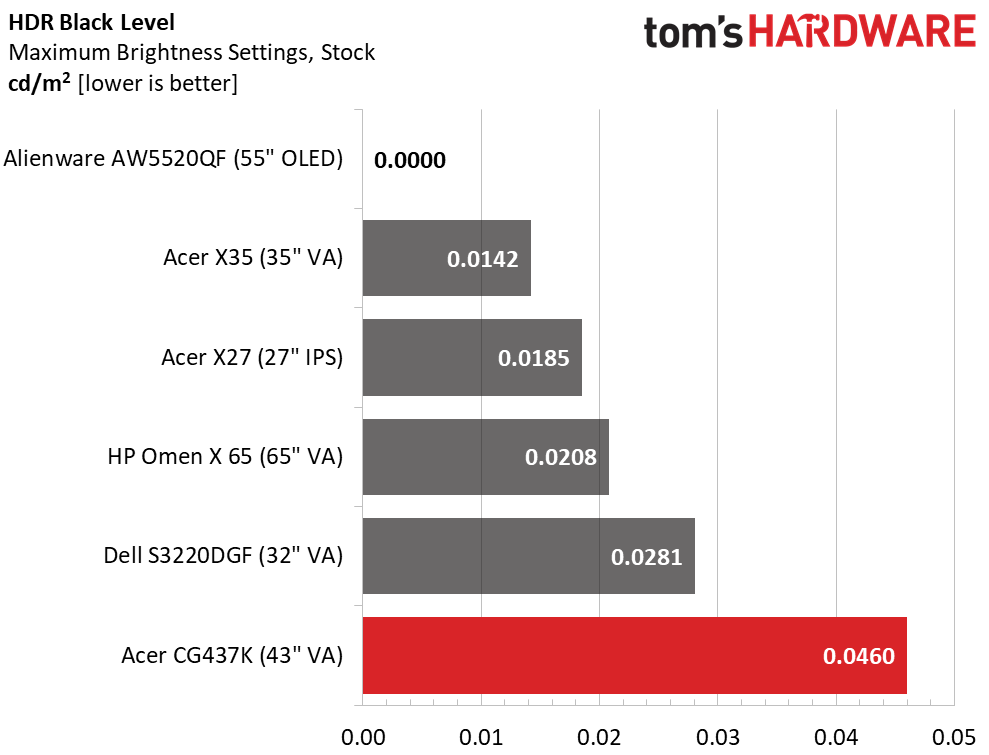
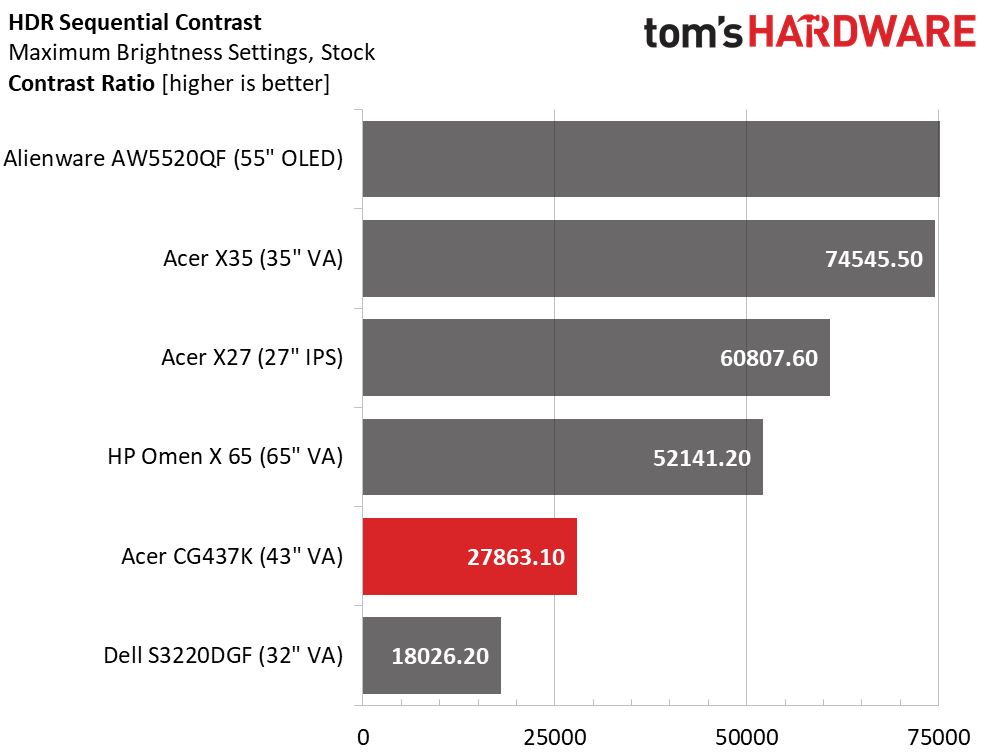
The CG437K delivered nearly 1,300 nits peak in HDR mode. This was measured with a full-field pattern, making the result even more impressive. Only the professional-grade Asus ProArt PA32UCX ($4,500 at the time of writing) can beat it with its 1,488 nits. Black levels were solid but not quite a low as the full-array screens in the group or the OLED. But with a resulting contrast of 27,863.1:1, we’re not complaining. This Predator delivers killer HDR.
Grayscale, EOTF and Color
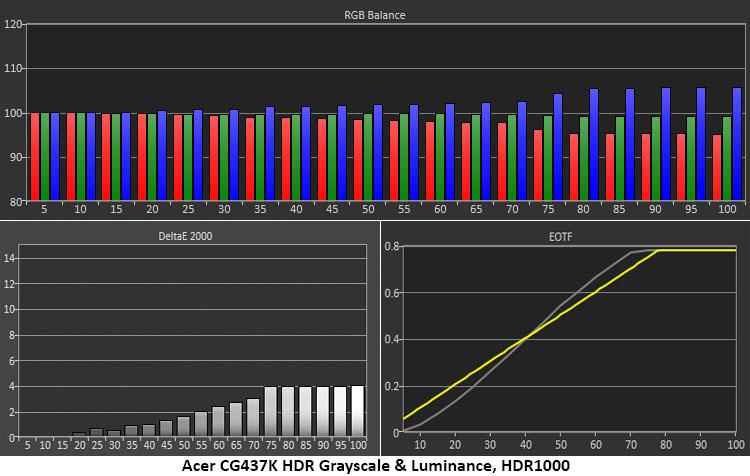
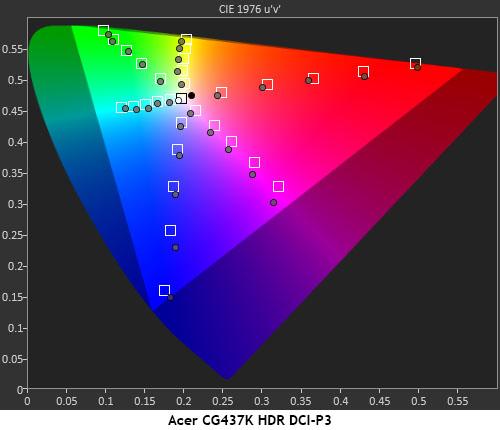
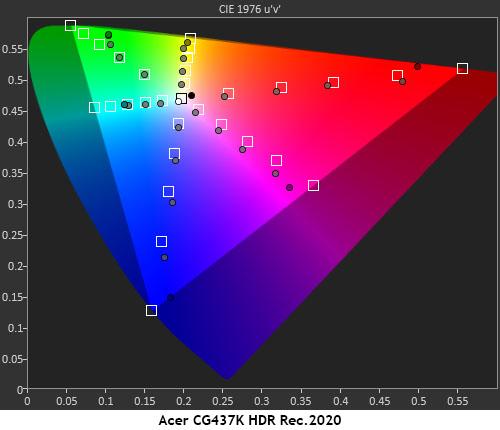
The CG437K’s dynamic contrast feature, which selectively dims parts of the edge backlight, slightly skews the EOTF luminance curve from its ideal spec. At the dark end, it favors deeper blacks which may obscure some fine shadow detail. Highlights also look very bright but with slight clipping of detail. Grayscale tracking is very good, however, with no errors visible anywhere in the brightness range.
Color tracking is strong with all saturation points on-target except for the 100% green point. There, the CG437K is slightly under-saturated. We also measured a slight hue error in magenta. Other colors were closer to target. Overall, this is excellent HDR color accuracy. The Rec.2020 chart looks as expected with measurements on target for the lower saturations until the display runs out of color at around the 80% mark.
MORE: Best Gaming Monitors
MORE: How We Test Monitors
MORE: All Monitor Content
Get Tom's Hardware's best news and in-depth reviews, straight to your inbox.
Current page: HDR Performance
Prev Page Grayscale, Gamma and Color Next Page Viewing Angles, Uniformity, Response and Lag
Christian Eberle is a Contributing Editor for Tom's Hardware US. He's a veteran reviewer of A/V equipment, specializing in monitors. Christian began his obsession with tech when he built his first PC in 1991, a 286 running DOS 3.0 at a blazing 12MHz. In 2006, he undertook training from the Imaging Science Foundation in video calibration and testing and thus started a passion for precise imaging that persists to this day. He is also a professional musician with a degree from the New England Conservatory as a classical bassoonist which he used to good effect as a performer with the West Point Army Band from 1987 to 2013. He enjoys watching movies and listening to high-end audio in his custom-built home theater and can be seen riding trails near his home on a race-ready ICE VTX recumbent trike. Christian enjoys the endless summer in Florida where he lives with his wife and Chihuahua and plays with orchestras around the state.
-
derekullo I have been waiting to buy a 40"ish monitor for a while.Reply
I am glad I waited :)
This deserves a
-
maximiza my bdm4065 had a led strip burn out, I ordered this. 2nd week still waiting. I suspect a long back order. worth the wait as I stare at my dark band across my current monitor.Reply -
mlee 2500 Finally some progress in this area....real 4K + Gsync at more than 60Hz on a screen larger than 27" without going T.V. size.Reply
I just don't see myself going VA panel again, especially on a screen that's larger than my field of vision by default. But Acer's first 4K panels were VA before they started producing comparable IPS products, so maybe just need to wait a little longer. -
cfbcfb Well, was the price mentioned anywhere in the article. Plenty of pricing on other monitors on the first page. Didn't want to read 6 more long pages to find out.Reply -
fredg3 Has anyone confirmed whether the subpixel layout is RGB or BGR?Reply
Has anyone used it for spreadsheets? Are all the characters clear? -
Jennifer W Meh, I’ve been using an LG 43UD79-B for a couple years now.Reply
it’s kinda too big for gaming IMO, seriously... it’s HUGE
it only cost $600...
So yeah, just gonna stick with what I have. -
Jennifer W Reply
$1500cfbcfb said:Well, was the price mentioned anywhere in the article. Plenty of pricing on other monitors on the first page. Didn't want to read 6 more long pages to find out.
Pass -
Kridian I just can't bring myself to spend as much money as I would for an entire PC on a display like this.Reply
Absolutely absurd pricing. Those idiots. -
maximiza if you get it make sure to download the display widget software. it is very nice . the default is in eco display mode. I really do not know what to do with the rgb led strips though.Reply